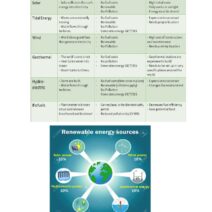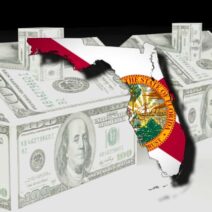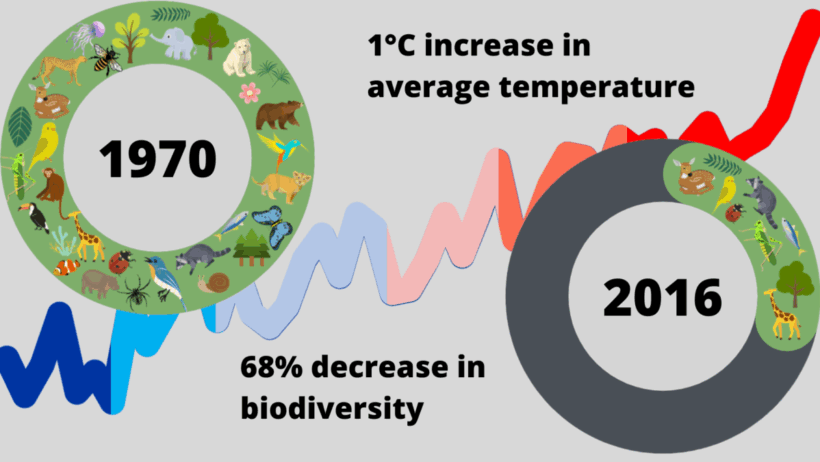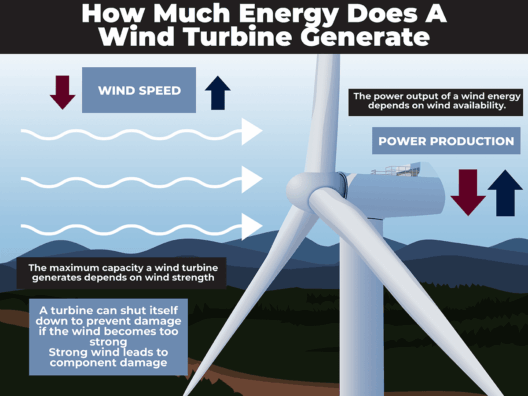As we embark on a deep dive into the intricate relationship between climate change and biodiversity, one might wonder, “What happens when the climate becomes an uninvited guest in various ecosystems?” This playful inquiry embodies a grave challenge—a chasm that threatens to widen as our planet warms. The interconnectedness of life is delicate, and disruptions can lead to irreversible consequences. In the following sections, we will unravel how climate change fundamentally alters biodiversity and explore the multifaceted implications of these changes.
Understanding Biodiversity: More Than Just Variety
Biodiversity encompasses the myriad forms of life that inhabit our planet, from the tiniest insects to the largest mammals and the vibrant flora that sustains them. This diversity is fundamental to ecosystem resilience. Each organism plays a role—whether it’s a pollinator aiding plant reproduction or a predator maintaining prey populations. The greater the variety, the more robust the ecosystem. However, the persistent march of climate change is jeopardizing this delicate balance.
Climate change disrupts habitat integrity, leading to shifts in species distributions. As temperatures increase and precipitation patterns become erratic, many species are forced to adapt or face extinction. Habitat loss due to rising sea levels, deforestation, and the encroachment of urban development compounds these challenges. The fundamental question arises: can species adapt quickly enough to keep pace with the accelerating changes in their environment?
The Cascade Effect: A Chain Reaction
When ecosystems undergo stress due to climate change, the ramifications manifest as a chain reaction. The decline of one species can precipitate the collapse of entire food webs. For instance, consider coral reefs, often dubbed the rainforests of the ocean. Rising sea temperatures lead to coral bleaching, a phenomenon where corals expel the symbiotic algae that provide them with sustenance. The loss of coral impacts not only the myriad fish species that rely on these habitats but also the communities that depend on fishing for their livelihoods. The interplay is profound, revealing how climate-induced changes in one area can resonate throughout an entire ecosystem.
Furthermore, habitat degradation can lead to increased competition among species as they become confined to shrinking areas. The introduction of invasive species, bolstered by warmer climates, exacerbates these challenges. These invaders often outcompete native species for resources, leading to declines in biodiversity. Imagine the intricate dance of species that has evolved over millennia disrupted by a newcomer that has no regard for established hierarchies. The resilience of ecosystems starts to crumble under such pressures.
Migratory Patterns: A Disruption in the Journey
Migratory species depend on specific environmental cues to navigate their long journeys—changes in temperature, daylight, and food availability guide them. Climate change has thrown a wrench into these well-orchestrated annual performances. Birds migrating north may arrive at their summer breeding grounds too early or too late, missing critical food resources. The flora they depend on may have shifted blooming times, creating mismatches in timing that threaten their reproductive success.
This disruption is not limited to avian species; it ensnares a multitude of wildlife. The shifting climate may compel certain species to alter their migratory routes entirely, leading them into uncharted territories where they face new predators and competitors. The consequences of these profound changes can ripple through entire ecosystems, leading to unforeseen ecological imbalances.
Loss of Ecosystem Services: A Human Dilemma
Biodiversity underpins the ecosystem services that humanity relies upon—services such as pollination, water purification, and soil fertility. The loss of biodiversity due to climate change creates a precarious situation for human populations. As some species decline, others may proliferate, potentially leading to the emergence of pests and diseases. For instance, the demise of natural predators can lead to an increase in agricultural pests, which could devastate crop yields and threaten food security.
Beyond food production, the degradation of ecosystems affects water sources and air quality. The intricate balance that nature maintains becomes unstable, leading to ecosystem dysfunction. Herein lies a challenge: as biodiversity diminishes, so too does our capacity to cope with future environmental changes. The question becomes more poignant—how do we safeguard biodiversity amidst the ongoing climate crisis?
The Path Forward: Strategies for Conservation
Combatting the dual threats of climate change and biodiversity loss necessitates a multi-faceted approach. Conservation efforts must encompass both mitigation of climate change and the preservation of biodiversity. Strategies include protecting and rehabilitating habitats, establishing wildlife corridors, and promoting sustainable practices. By maintaining connectivity among habitats, species have a better chance of adapting to the changes they face.
Furthermore, public education plays an essential role. Understanding the intrinsic value of biodiversity encourages communities to advocate for sustainable practices and conservation initiatives. Policy reforms that prioritize environmental protection can drive significant change, steering us toward a more sustainable future.
Ultimately, the interplay between climate change and biodiversity is a pressing issue that demands our immediate attention. As stewards of the Earth, we are challenged to confront this crisis with innovative solutions and a collective determination to preserve the intricate web of life that supports our planet. The clock is ticking, but hope remains if we choose to act with urgency and purpose.






